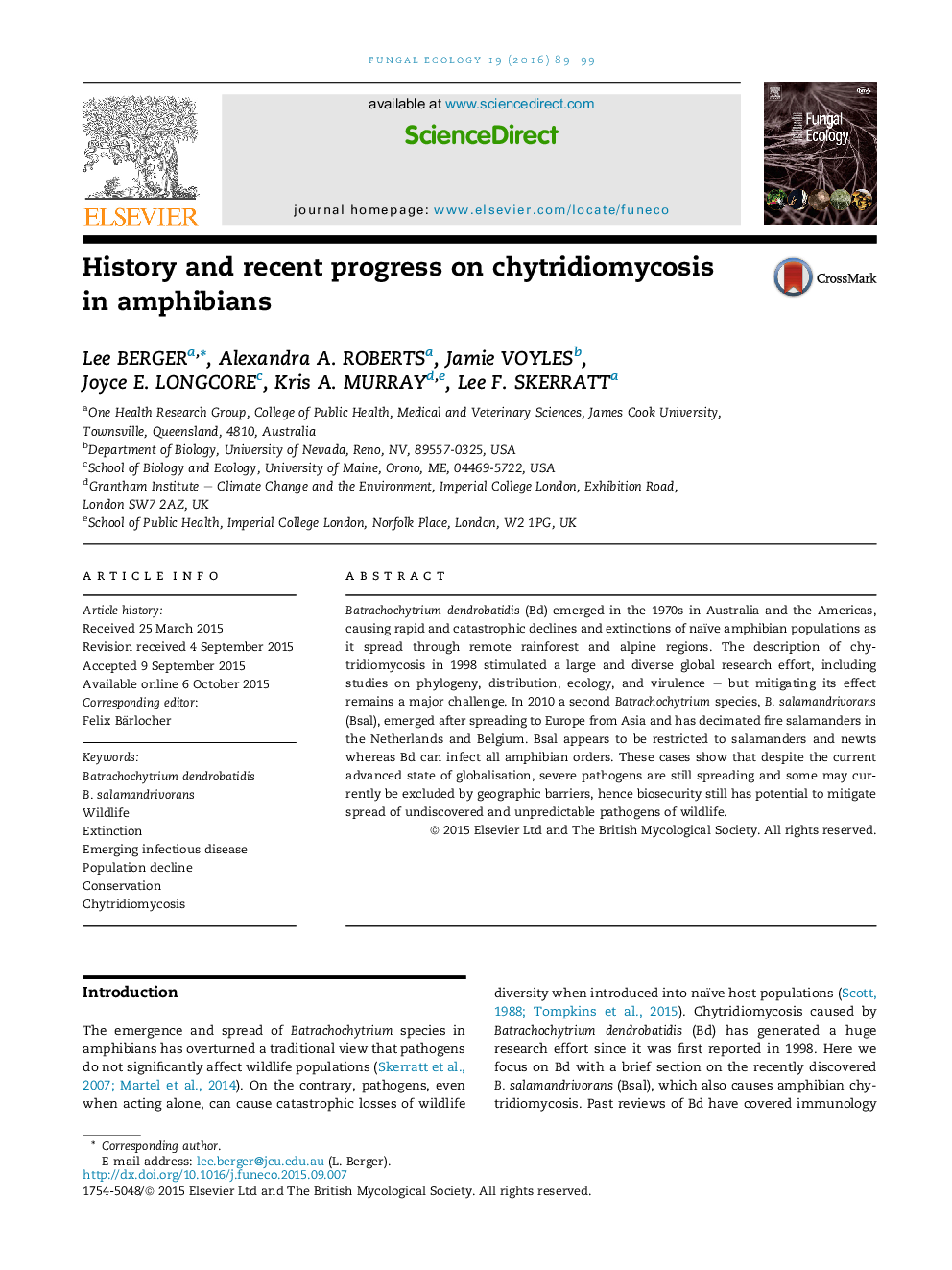| کد مقاله | کد نشریه | سال انتشار | مقاله انگلیسی | نسخه تمام متن |
|---|---|---|---|---|
| 2053900 | 1543645 | 2016 | 11 صفحه PDF | دانلود رایگان |

• Two chytridiomycetes have spread globally causing amphibian population declines.
• Their discovery used outbreak investigation methods (epidemiology and pathology).
• Research is needed to improve amphibian survival in infected areas.
• Mitigating spread of B. salamandrivorans to naïve regions is urgent.
• Biosecurity can prevent spread of novel and unpredictable emerging diseases.
Batrachochytrium dendrobatidis (Bd) emerged in the 1970s in Australia and the Americas, causing rapid and catastrophic declines and extinctions of naïve amphibian populations as it spread through remote rainforest and alpine regions. The description of chytridiomycosis in 1998 stimulated a large and diverse global research effort, including studies on phylogeny, distribution, ecology, and virulence – but mitigating its effect remains a major challenge. In 2010 a second Batrachochytrium species, B. salamandrivorans (Bsal), emerged after spreading to Europe from Asia and has decimated fire salamanders in the Netherlands and Belgium. Bsal appears to be restricted to salamanders and newts whereas Bd can infect all amphibian orders. These cases show that despite the current advanced state of globalisation, severe pathogens are still spreading and some may currently be excluded by geographic barriers, hence biosecurity still has potential to mitigate spread of undiscovered and unpredictable pathogens of wildlife.
Journal: Fungal Ecology - Volume 19, February 2016, Pages 89–99